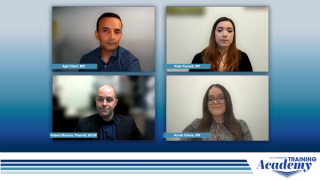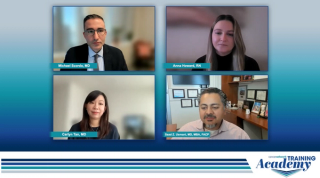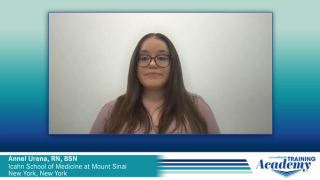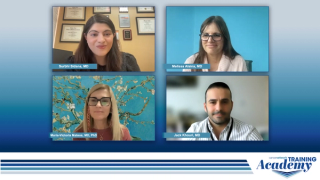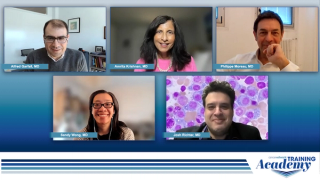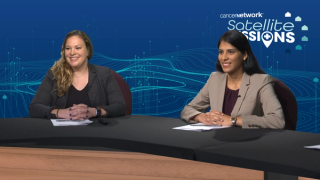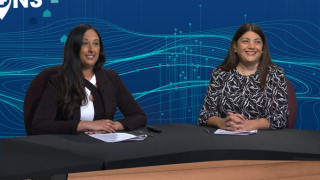
Multiple Myeloma
Latest News
Latest Videos

More News

Adding daratumumab to lenalidomide and dexamethasone significantly improved progression-free survival in patients with relapsed or refractory multiple myeloma.

The addition of carfilzomib to lenalidomide and dexamethasone improved health-related quality of life compared with treatment with lenalidomide/dexamethasone alone among patients with relapsed multiple myeloma enrolled in the ASPIRE trial.

Adding the CD38-targeting monoclonal antibody daratumumab to bortezomib and dexamethasone resulted in significantly improved progression-free survival in patients with heavily pretreated multiple myeloma.

Socioeconomic factors affected the care and survival of younger patients with multiple myeloma, but race/ethnicity itself did not influence survival.

Treatment with carfilzomib, lenalidomide, and dexamethasone improved the poor prognosis associated with high-risk cytogenetic abnormalities of multiple myeloma.

A new study found that monitoring of minimal residual disease in a group of elderly patients with multiple myeloma proved to have important prognostic value, regardless of patient age or cytogenetic risk.

Continuous lenalidomide plus low-dose dexamethasone reduced the risk for progression in untreated multiple myeloma patients who were ineligible for stem cell transplantation.

CD38 expression was associated with response to daratumumab monotherapy in patients with multiple myeloma.

Grade 3/4 neutropenia is a common adverse event experienced by patients undergoing treatment for relapsed, refractory multiple myeloma with lenalidomide and dexamethasone, a new study has found.

In this article, we elucidate the rationale for use of novel drug combinations in patients with myeloma, and review current evidence-based data supporting the use of specific combinations in various settings. We also attempt to craft a framework to guide clinicians in optimizing the use of combination therapies, to enable patients to derive maximal benefit.

A new study has found an association between body mass index and the risk for multiple myeloma among African Americans in the United States.

Adding ixazomib to the combination of lenalidomide/dexamethasone resulted in a more than 35% improvement in the risk for disease progression or death in patients with relapsed or refractory multiple myeloma.

A first-in-man phase I study of CUDC-907, which targets both histone deacetylase and PI3K enzymes, has shown promise in patients with relapsed or refractory multiple myeloma or lymphoma.

The FDA has approved two indications of a new formulation of melphalan hydrochloride called Evomela for the treatment of multiple myeloma.

Early relapse after stem cell transplant was linked with worse overall survival in multiple myeloma patients who received a novel agent prior to transplant.
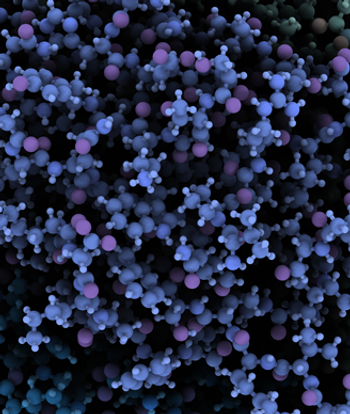
Higher levels of the hormone adiponectin may protect against the development of multiple myeloma in overweight and obese individuals.

Baseline serum levels of the inhibiting inflammatory cytokine interleukin-10 (IL-10) were predictive of prognosis in a group of patients with multiple myeloma.

Despite similar survival, multiple myeloma patients treated with lenalidomide experienced lower rates of neurologic toxicity than those treated with thalidomide.

The FDA recently expanded the drug label for carfilzomib (Kyprolis), which is now approved in combination with dexamethasone or with lenalidomide plus dexamethasone for patients with relapsed or refractory disease who have received one to three lines of therapy.

A new study has shown that dinaciclib disrupted homologous recombination function and led to cell death in multiple myeloma cell lines when combined with the PARP1/2 inhibitor ABT-888.

Researchers have identified several factors that may help to predict the progression of vertebral fractures and future fractures in patients with multiple myeloma.

Chimeric antigen receptor T cells can eradicate large burdens of multiple myeloma, according to a new study presented at ASH.

Chemotherapy plus lenalidomide was shown to be inferior to high-dose melphalan and ASCT in transplant-eligible patients with newly diagnosed multiple myeloma.

Adding elotuzumab to lenalidomide and dexamethasone for the treatment of relapsed or refractory multiple myeloma appears to result in better efficacy and safety.

The FDA approved the proteasome inhibitor ixazomib, in combination with lenalidomide and dexamethasone, to be used as a second-line treatment in multiple myeloma.


